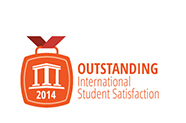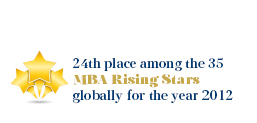The world is changing fast. These changes are evident in the work environment. Covid-19 has brought all these changes closer.
No, this article is not about complex algorithms or advanced AI systems. Nor is about whether we are all going to be replaced by robots or machines and be unemployed.
It’s about all Covid-related changes in the work environment and a calculated guess about the post-Covid era of the labor market along with new trends and developments.
The Pandemic
The pandemic came as a thunderbolt to everyone. No country or government was prepared for what was about to come. Systems and technology weren’t ready, policies and procedures weren’t ready. Companies and employees weren’t ready. No one was ready!
And nearly all the global workforce has been affected. Both organizations and employees faced tremendous challenges. Sectors like Hospitality or Air travel faced massive disruption. We all had to change the way we think, the way we work and the way we live. The world will never be the same again so we must all be prepared for the new normal.
The Transition
The transition to remote working conditions has been challenging for both employees and companies. As the CEO at Microsoft, Satya Nadella, said: “We’ve seen two years’ worth of digital transformation in two months”.
In the humorous question “Who led the digital transformation in your organization?” the most common answer was Covid-19 rather than the CEO or the IT Director.
The 1st phase of the pandemic was all about crisis management emphasizing issues such as the employees’ health and safety. Now, and while entering (as it seems) the pandemic’s 2nd phase, wiser(!) and more prepared than before, we are ready to address the challenges that have emerged either concerning the workforce or being market related.
Even before Covid-19, the remote working has been gaining momentum against the normal corporate environment. The share of employees who work remotely at least once per week has grown by 400% since 2010. It was expected that by 2030 remote working would be the norm and the office would be the exception. It seems that the pandemic has brought 2030 nearly 10 years earlier.
But remote working has two basic elements. How you communicate and where you are located. In most multinational organizations, remote communication was the norm. All have presence in multiple countries (that’s why they are called multinationals), all have regional offices supporting and coordinating employees and teams in different locations. Many have set up Shared Services Centers or Centers of Excellence all over Europe or US. These employees are communicating more with their colleagues in different countries rather with the colleagues in the next office. The only difference now will be their actual location, work office or home office. In the end it’s all about communication.
A Matter of Productivity
But what about actual performance? What about productivity?
The market conditions don’t allow for actual comparisons between pre- and post-Covid periods, as the variables are too many and there is a lot of “noise” in the market. There are studies though showing that productivity hasn’t hit rock bottom (as most who opposed remote working were afraid). In the contrary, remote workers performed nearly as well as those being in the office. Furthermore, those with highly complex jobs that require little or no interaction with other employees (such as IT development or research) were even more productive when remote than in an office.
Recent studies have also shown that most employees feel happier when working from home some of the time. 83% of workers, remote or on-site, say that a remote work opportunity would make them feel happier at their job. If they could, 99% of people would choose to work remotely, at least part-time, for the rest of their careers.
Why is that?
Because they would have more time to work and less commuting. They would have more time to spend with family. They would have more flexibility in setting their working schedule. And, of course, happier employees means more productive employees (other things being equal).
But wait a minute. If working remotely has so many advantages why we didn’t we do it earlier? And why not making it a new normal right now! Well, because there also some drawbacks in the equation.
Many employees feel disconnected from their colleagues. Some even feel lonely, especially those who don’t have family close to support them. And of course, there is the problem of mixed boundaries. Where work ends and where personal life begins? Technology and systems are not yet ready to support so many employees working remotely. There are also dangers emerging from cyber-attacks as home offices are far less protected than company offices against such threats.
And then there are trust issues. Many managers are skeptical about employees productively working when they are not constantly monitored. And if today most employees are concerned about losing their job and are trying even harder, what would happen when all these are behind us. Will these employees be disciplined enough to remain focused and work as hard or house distractions will prevail? Are the appropriate KPIs in place to track employee performance and solve the riddle?
WfH (Work from Home) or Not
The answer to the Work from Home or office looks relatively easy if you consider all the facts – a combined approach that makes the most out of the advantages of both worlds looks ideal. No method is best on its own, so how about mixing them according to employee and company “needs and wants”?
How about 1-2 days work from home per week?
Flexible work schedule – check
Time with family – check
Less commuting – check
Save time and money – check
Less distractions, more focus – check
It’s all about balancing structure and sociability on one hand, and independence and flexibility on the other. You need time for close collaboration or brainstorming? You choose the office. You need time to focus, analyze data and prepare complex reports? You choose home.
Productivity driven by Work Life Balance.
Maybe, after this enormous shock, there is still a chance to end up in a new and better equilibrium.
New Trends @ the Workplace
Digital Nomads: This new trend derives from the expansion of remote working. More and more the workplace is becoming irrelevant and performance is based on results rather than time and effort (and presence).
In a few years we will be experiencing a new War of Talent but at a different level. In the past (and present) companies were “fighting” to attract the best talent available in order to compete in the global arena. In the near future, countries and cities will be fighting to attract talent to live (and spend) in their premises.
Even today, we start seeing WhF proposals from exotic destinations offering all amenities and comforts to attract affluent executives to work/relax at their premises.
Companies like Teleperformance has already started exploiting Greece’s competitive advantage and is attracting multilingual customer care agents from all over Europe and placing them to ideal destinations like Crete. This is going to expand to many more specialties and professions.
The New Office: Before Covid, companies were competing for the best innovative, hyper lux, Google style, futuristic office. The structure of the office was directly linked to creativity and performance. Private chefs, billiards or ping pong tables, video games and gyms were among the amenities that companies were investing in order to encourage employees to work longer and make the office the best place to be. The place where innovation and collaboration thrive. In many ways such offices were a competitive advantage for companies to attract talent. Well, no more.
The last Google update says it all – Google won’t reopen offices until July 2021.
Huge buildings housing thousands of employees will be a thing of the past. Smart hubs, blending physical and virtual environments, hi tech working stations and meeting rooms will replace the vast majority of offices. Even today, companies are reluctant to maintain the same amount of office space for a smaller number of workers and thus are backing out from large leasing contacts searching for smaller, technology-driven offices.
A new set of Skills: In a fast-changing work environment the skills necessary for one to succeed are constantly changing. Even before Covid, technology was the main driver behind most changes and digital skills were essential. Today when most people are forced to work remotely, those skills have become critical.
On the other hand, in terms of soft skills, resilience is the key to thrive in a post-pandemic business world. Strategist, forward-thinker and inspirational were also found to be key attributes leaders need to succeed. Client- and employee-centric strategies are on top of almost every CEO agenda to be implemented as pandemic declines.
Last but not least, and attitude rather than skill, is the mindset of continuous learning. The good news is that learning new skills is easier than ever. LinkedIn learning or Coursera and edX are, among others, platforms who provide content for a plethora of skills, readily accessible and in an asynchronous way at a fraction of the cost. All you need is the correct mindset!
The end of Work-Related Travels(?): I know executives that literally live on a plane. Being responsible for coordinating several teams in different countries they spend their life traveling. Others, were used to spend 2 days of work for a 2-3 hour meeting at another country. And I don’t count the fatigue, expenses, hotels, tickets, food etc. These are all in the past. It makes you wonder though how all these survived until today. If the financial crisis hurt them, Covid actually killed them.
Exception. The sales related travels. Salespeople say that nothing beats a face to face meeting. Well, in this case it’s actually true. The handshake, the body language, emotions, feelings and reactions are all more “real” in person that through a camera. So, it stays (for now).
A 4-Day Week (or a 6-Hour Day): I left it at the end as bonus. If you are just an employee this would be your dream. If you are a manager it depends according to your …. targets. Technology has brought it closer, some countries have already started experimenting with it. Is it really possible?
Even today, automation and AI can substitute nearly half of employee performed activities mainly of administrative nature. That means that we can focus more on value added activities and tasks freeing time from our working schedule. The benefit? It is expected that a 4-day work week (or a 3-day weekend) will increase employee satisfaction, creativity, company commitment and teamwork and will decrease stress levels.
In the end, few of us can be really productive for more than 3-4 hours a day!















